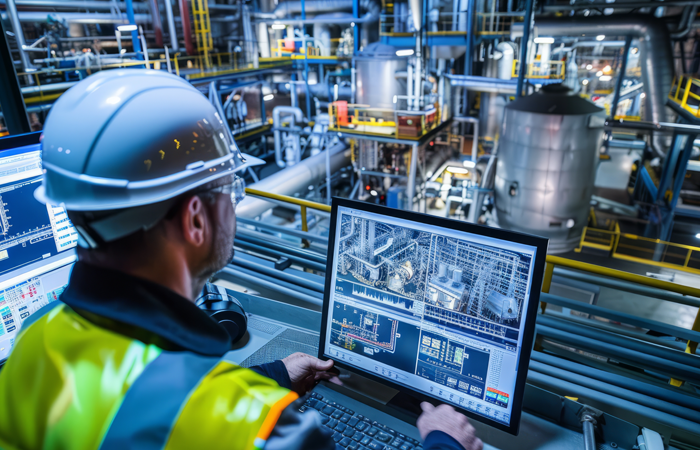How Manufacturing Plant Architects Optimize Production Spaces

In the modern manufacturing industry, efficiency, safety, and functionality are critical factors that directly influence productivity and profitability. Architectural design plays a central role in achieving these goals, as it shapes the environment where production occurs. Stendel + Reich manufacturing plant architect services are specifically tailored to enhance production facilities, ensuring that each space is designed with functionality, compliance, and workflow optimization in mind.
The Role of Architects in Manufacturing Plant Design
Manufacturing plant architects bring specialized knowledge of production needs and industry standards to every project. Unlike traditional architectural design, manufacturing plant design requires a detailed understanding of machinery layout, workflow efficiency, and regulatory compliance. Architects working on these projects consider factors like material flow, worker safety, space allocation, and environmental impact.
An architect’s role often begins with a thorough analysis of the production process and operational needs of the facility. This involves studying machinery requirements, production steps, and staffing needs to create a design that minimizes wasted movement and maximizes productivity. Effective design can also reduce operating costs by optimizing the use of energy, lighting, and ventilation systems.
Key Considerations in Manufacturing Plant Design
When designing a manufacturing plant, architects must balance multiple factors to create an efficient, functional space.
- Workflow Optimization: An efficient workflow is critical to minimizing downtime and maintaining consistent productivity. Architects arrange work areas, machinery, and storage in a logical sequence that supports a seamless flow from one stage of production to the next. For instance, placing raw materials storage close to the production line minimizes the time and effort needed to transport materials, while strategically locating shipping areas streamlines product distribution.
- Space Utilization: Architects must maximize the available space to accommodate both machinery and personnel. This requires careful planning to ensure that each square foot is used effectively, from production areas to storage, administrative offices, and employee break rooms. In addition, architects often design with flexibility in mind, allowing the facility to adapt to future changes in production or expansions.
- Compliance with Industry Standards: Manufacturing plants must meet specific health, safety, and environmental standards. Architects ensure that the facility complies with all local and industry regulations, from proper ventilation systems to safe walkways and emergency exits. Compliance not only enhances worker safety but also protects the company from potential legal liabilities.
The Benefits of Specialized Manufacturing Plant Architects
Working with architects who specialize in manufacturing plants, like Stendel + Reich manufacturing plant architect, brings unique advantages. These architects have experience with industry-specific needs, such as designing for high hygiene standards in food processing or chemical manufacturing. Their expertise enables them to create spaces that support efficient, safe, and hygienic production environments, directly impacting the quality of products and the safety of workers.
Specialized architects also consider the sustainability of the facility. They incorporate energy-efficient systems, optimize natural lighting, and design with eco-friendly materials when possible. These considerations help manufacturing plants reduce their environmental footprint and lower operating costs in the long term.
Examples of Design Features in Optimized Manufacturing Spaces
In well-designed manufacturing facilities, specific architectural features support operational efficiency:
- Modular Design: Modular spaces allow for adaptability, making it easy to reconfigure or expand production areas as needed.
- Dedicated Workflow Zones: Separating zones for raw material storage, production, and packaging minimizes cross-contamination and supports regulatory compliance.
- Efficient Ventilation and Lighting: Strategic ventilation ensures a comfortable working environment and reduces the risk of airborne contaminants, while efficient lighting supports productivity and worker safety.
- Employee Welfare Areas: Including well-designed break rooms and wellness areas fosters a positive workplace culture and supports employee satisfaction and retention.
The Long-Term Impact of Optimized Facility Design
When a manufacturing plant is designed with efficiency and adaptability in mind, it supports sustainable growth. Companies can scale up production, change layouts, and meet industry demands more easily in a facility that was built with flexibility and functionality in mind. An architect’s focus on details like workflow optimization, compliance, and sustainability helps ensure that the plant operates smoothly, benefiting the organization’s long-term productivity and profitability.
In conclusion, specialized architects play an essential role in manufacturing plant design, using their expertise to create facilities that support operational success and compliance. With thoughtful planning and attention to detail, Stendel + Reich manufacturing plant architect services offer a valuable asset to companies looking to optimize their production spaces and create facilities built for efficiency, safety, and growth.

